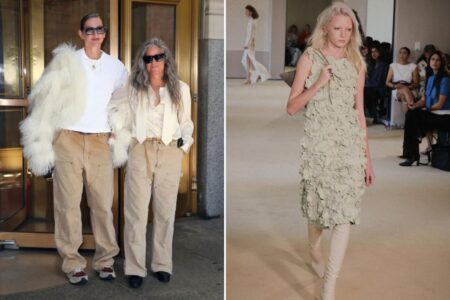A new trend has started to emerge in workplaces across the world, including Australia, and it is one that has experts seriously concerned.
Most people have likely heard of the term “job hopping”, which is the practice of frequently changing jobs, usually to gain experience, increase salary and accelerate career growth.
Well, this new trend – dubbed “job hugging” – is basically the opposite of that.
Job hugging is where an employee stays in a role, even if they are unhappy or find the job unfulfilling.
Having people remain in their jobs may not seem so bad on the surface, but experts have warned this trend could have more serious consequences than many may realize.
The phenomenon is being fuelled from a place of fear around job market instability, with middle management expert and BoldHR founder Rebecca Houghton saying leaders “should be worried”.
“Workers aren’t ‘hugging’ their jobs because they love them. They’re ‘hugging’ them because, frankly, the alternative looks worse,” she told news.com.au.
“This is risk aversion, pure and simple-driven by economic anxiety and a global hangover from pandemics, restructures, fears that AI will take over, and everything in between.”
Houghton said “people are tired,” with recent research from BoldHR showing one in three managers surveyed are burnt out.
The HR expert explained that the combination of burnout and a risky economic environment can lead to people leaning into familiarity, as it feels safe.
She warned that leaders need to seriously think about what happens next, as job huggers “aren’t loyal”.
“The minute the market picks up, they’ll be the first out the door. Quietly. Quickly. Smart leaders won’t wait for the exodus,” she said.
“They’ll act now, by building workplaces people choose to stay in, not ones they simply haven’t escaped from yet.”
There are already signs this trend has started to take hold locally.
Australia’s job mobility rate has fallen for two years in a row, with the latest data from the Australian Bureau of Statistics (ABS) showing it is now at 7.7 percent.
Just under eight per cent of employed people, or roughly 1.1 million people, changed their employer or business in the 12 months to February 2025.
The number of people changing jobs has dropped significantly since the COVID period, when the rate increased to 9.6 per cent in February 2023.
Trend signals a ‘major shift’
Rich Lewis-Jones, VP APAC of talent acquisition software provider SmartRecruiters, said the new trend is a “signal of a major shift in hiring dynamics”.
“Economic instability, AI-driven job uncertainty, and sluggish job growth have made stability the priority over new opportunities, especially among Gen Z and younger professionals,” Mr Lewis-Jones told news.com.au.
From a hiring perspective alone, he said businesses are going to have to take a much closer look at how they not only attract, by keep top talent engaged.
“If employees stay, doggedly but disengaged, productivity and innovation suffer,” he said.
“Proactive recruitment that emphasises stability, learning, and future potential is a great asset in this market.”
Job hugging is vastly different from other work trends that have become popularised in recent years.
Not too long ago, trends like quiet quitting, acting your wage and bare minimum Mondays were sweeping offices, as employees fought back against what they deemed to be unrealistic workloads.
But Houghton pointed out that job hugging is not a protest; it is a retreat, with people opting for stability over growth amid uncertainty.
She said, while this is understandable, it comes at a cost, warning engagement will drop, innovation will stall and talent development will flatline.
‘That is your red flag’
It is not just employers that need to be concerned about this new phenomenon, with clinical psychologist Dr Kaitlin Harkess saying the “huggers” themselves are at risk.
Speaking to news.com.au, she said, while job hugging can offer short-term relief through stability and security, the “cost may be higher” in the long term.
“Misaligned jobs and workplaces can erode confidence and motivation. From disengagement to burnout, our health suffers,” Dr Harkess said.
“From a psychological lens, the danger is that the longer you operate from fear and sunk costs, the more helpless and trapped you feel.
“Symptoms of anxiety and depression can increase along with self-confidence, and it can become even harder to pivot and harder to remember that work can feel meaningful.”
However, simply staying at a job doesn’t mean you are joining in on the “hugging” trend.
For example, a person may choose to stay at their job because the stability gives them freedom to focus on family or passions outside of work.
This is a conscious and empowering choice, with Dr Harkess pointing out, in this case, the person is accepting discomfort and still moving towards what matters to them.
Whereas “unhealthy” job hugging is the opposite of this, with the worker staying stuck because they “can’t tolerate the uncertainty of change”.
“This behaviour may look the same on the surface, but the psychological motivation, fear versus choice, makes all the difference in life quality,” she said.
So, how can you know whether you are staying in a job because it is the right choice for you or because you are scared to leave?
Dr Harkess said the Sunday scaries, constant boredom, irritability and frustration could all be clues that a person is clinging to a job in a way that is harmful to them.
Stress symptoms such as fatigue, poor sleep or headaches could also be an indication, along with behavioral changes like withdrawing from colleagues and a lack of engagement.
“While psychologically, you want to watch for inflexibility, which occurs when the fear of change outweighs one’s values,” she said.
“For instance, if you catch yourself saying, ‘I’d leave if I could, but I can’t’, you may have slipped into learned helplessness.
“That’s your red flag that job hugging has become job trapping.”
Read the full article here











